Red rice is an ancient grain that's making a comeback in the modern world.
This hearty, nutty-tasting grain has been used for centuries in Asia and South America for both its nutritional benefits and its flavor. And now, red rice is gaining popularity as a trendy superfood, thanks to its high fiber content and rich array of antioxidants.
So what makes red rice so special? Let's take a closer look.
What is Red Rice?
Red rice is a type of whole grain that's typically either brown or black in colour. The red colour comes from the presence of anthocyanin, a type of antioxidant that's also found in blueberries and other dark-coloured fruits and vegetables.
This nutrient-rich grain is a good source of fiber, iron, and magnesium. It also contains all eight essential amino acids, making it a complete protein.
Red rice is often classified as short-grain rice, which means the kernels are shorter and plumper than long-grain varieties like basmati or jasmine rice.
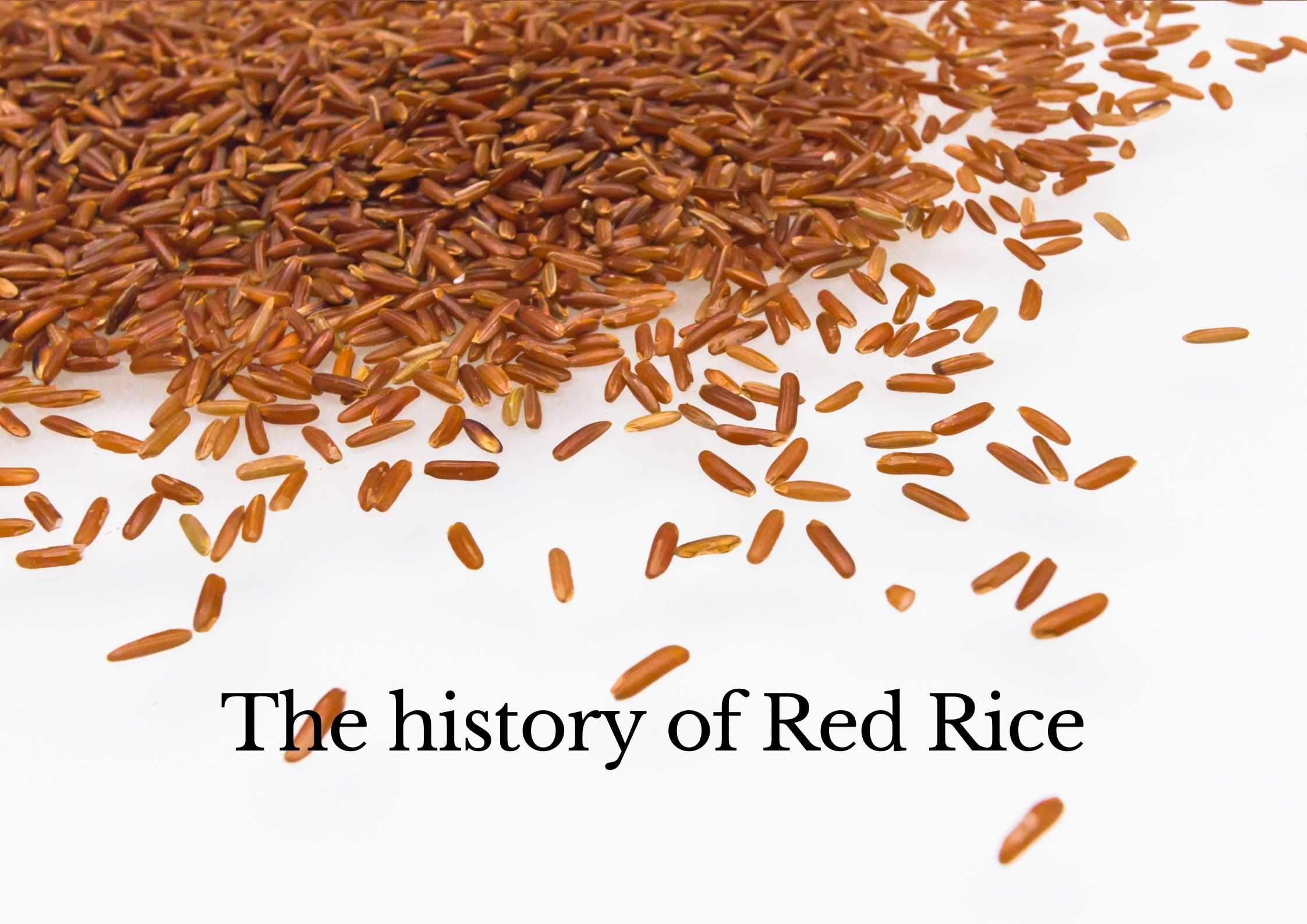
The history of Red Rice
Red rice has been cultivated for thousands of years in Asia and South America. In fact, it's thought to be one of the first crops ever domesticated by humans.
This grain was a staple food in ancient cultures such as India and China. It was also used medicinally to treat a variety of ailments, including digestive problems and skin infections.
In fact, red rice is so entrenched in Chinese culture that it's often given as a symbol of good luck during the New Year. It's also known as "forbidden rice" because it was once reserved for Chinese royalty.
Red rice continued to be an important food source in Asia and South America until the 16th century when Europeans began colonizing these regions. At this time, white rice became the grain of choice for both the colonists and the local people.
Red rice fell out of favour and was largely forgotten about until recent years when its health benefits started to be rediscovered by the mainstream world.
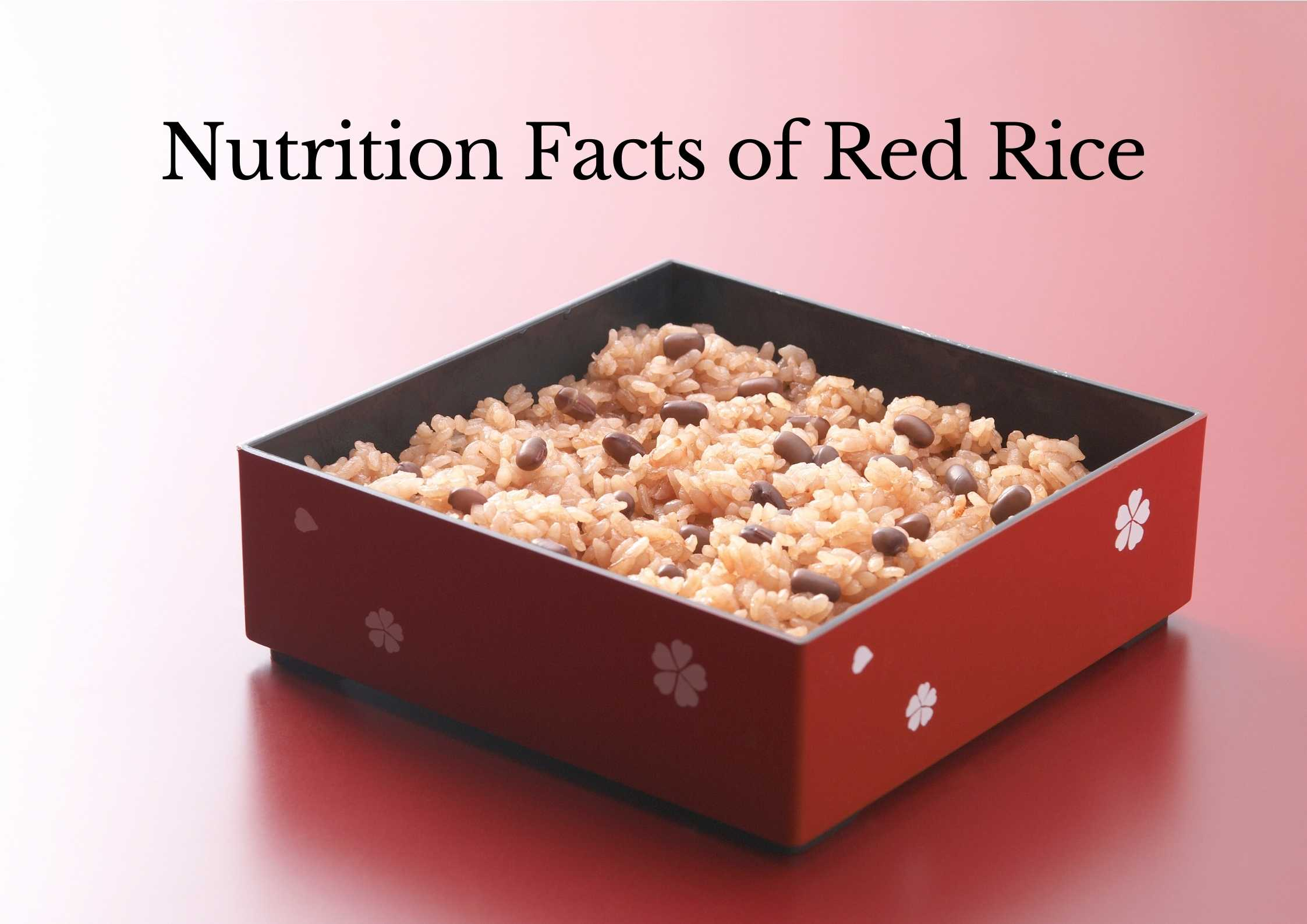
Nutrition Facts of Red Rice
Red rice is a nutritional powerhouse. A one-cup (165-gram) serving of cooked red rice provides:
Calories: 218
Protein: 5 grams
Fat: 1 gram
Carbs: 45 grams
Fiber: 3 grams
Iron: 15% of the Daily Value (DV)
Magnesium: 21% of the DV
Zinc: 10% of the DV
Copper: 20% of the DV
Manganese: 58% of the DV
Selenium: 34% of the DV
Potassium: 9% of the DV
The nutrient profile of red rice is similar to that of other whole grains like brown rice and quinoa. However, red rice stands out for its high manganese content. Manganese is a mineral that's essential for bone health, wound healing, and blood sugar regulation.
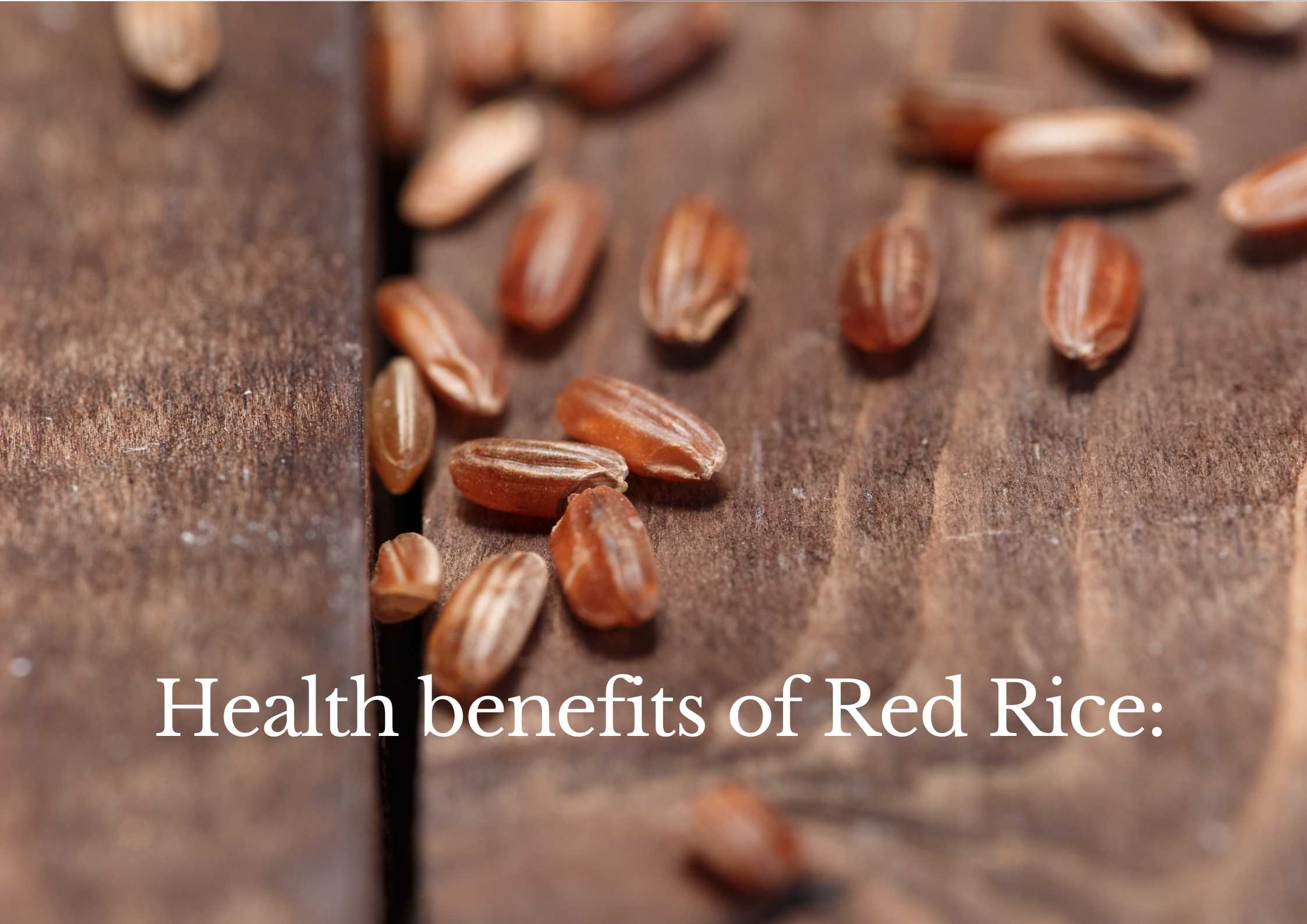
Health benefits of Red Rice:
In addition to being a good source of essential nutrients, red rice boasts a number of impressive health benefits.
Red Rice is rich in antioxidants:
Red rice is packed with antioxidants, including anthocyanins and flavonoids. These powerful compounds help to protect your cells from damage caused by inflammation and oxidative stress.
Some studies have shown that the antioxidant content of red rice may be even higher than that of brown rice.
Red Rice Help Lower Cholesterol Levels:
Red rice contains a type of soluble fiber known as beta-glucan. This fiber has been shown to help lower cholesterol levels by binding to cholesterol in the gut and preventing its absorption into the bloodstream.
A diet high in beta-glucan has also been linked to a reduced risk of heart disease.
Red Rice Helps to Lower Blood Pressure:
High blood pressure is a major risk factor for heart disease. Red rice contains magnesium, a mineral that's been shown to help lower blood pressure levels.
Magnesium works by relaxing the muscles in your blood vessels, which allows them to dilate and improve blood flow.
Red Rice Aids in Weight Loss:
Red rice may also be helpful for weight loss. This is due to its high fiber content, which helps to keep you feeling full after eating. Soluble fiber can also slow down the absorption of sugar into the bloodstream, helping to regulate blood sugar levels.
One study found that people who ate a diet high in soluble fiber lost more weight and body fat than those who didn't.
Red Rice May Lower Cholesterol:
Red rice contains plant compounds called phytosterols, which have been shown to lower cholesterol levels. In one study, participants who ate red rice for four weeks had significant reductions in their total and LDL (bad) cholesterol levels.
Red Rice Boosts Digestive Health:
The fiber in red rice also promotes digestive health by feeding the good bacteria in your gut and helping to keep you regular. Red rice may also help to reduce the risk of colon cancer.
A diet rich in fiber has been linked to a reduced risk of several other types of cancer, including breast, ovarian, and prostate cancer.
Red Rice Helps to Prevent Diabetes:
Red rice may also help to prevent type 2 diabetes. This is likely due to its high fiber and magnesium content. Both of these nutrients have been shown to help regulate blood sugar levels.
A diet rich in magnesium has been linked to a lower risk of type 2 diabetes, while a diet high in fiber has been shown to improve insulin sensitivity.
Red Rice May Improve Heart Health:
The fiber, antioxidants, and phytosterols in red rice all work together to support heart health. These nutrients have been shown to reduce inflammation, lower cholesterol levels, and protect against oxidative stress. All of these effects may help to reduce the risk of heart disease.
Red rice is an ancient grain that's enjoying newfound popularity thanks to its impressive nutritional profile and health benefits. This grain is packed with antioxidants, fiber, and minerals like magnesium and iron.
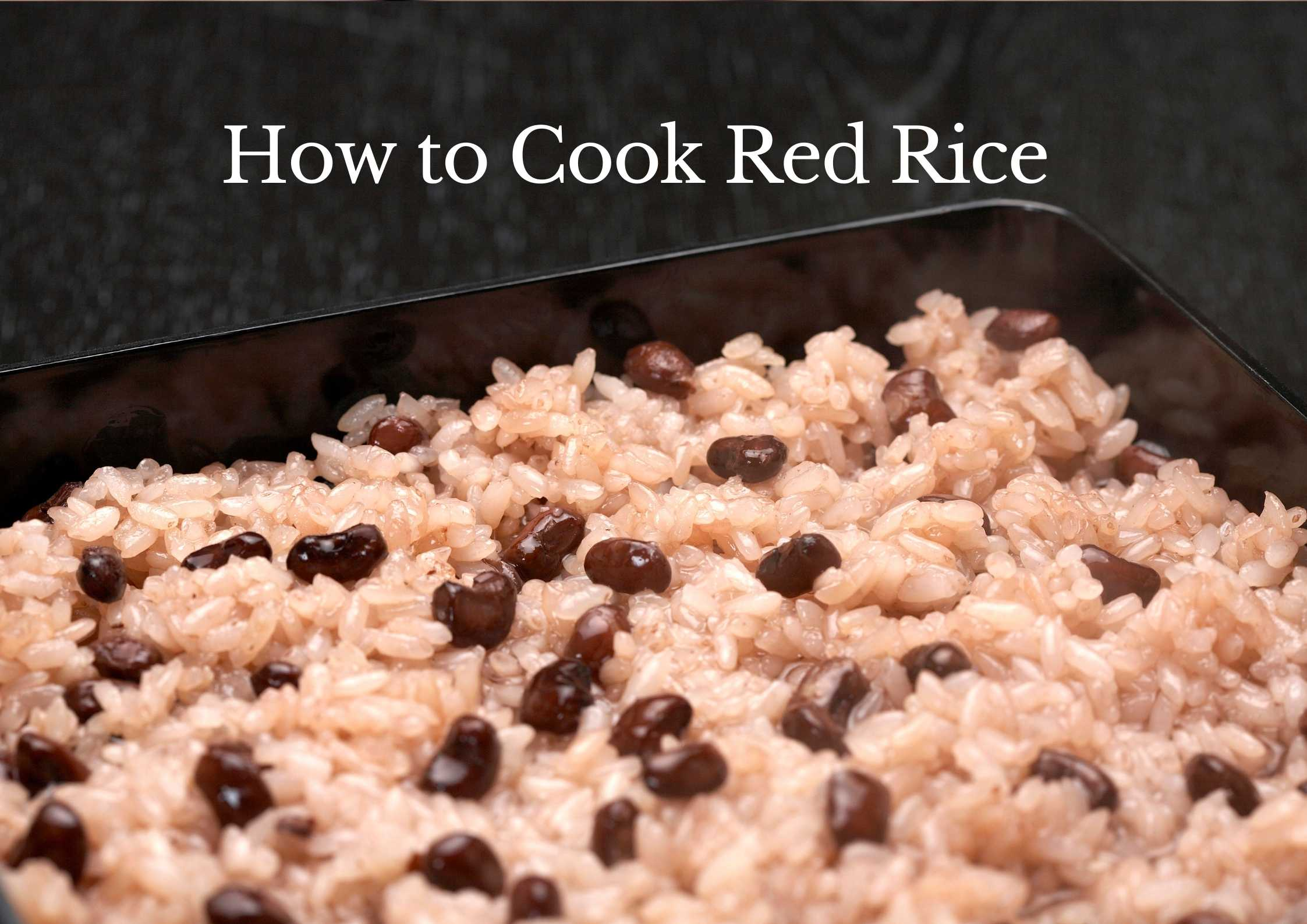
How to Cook Red Rice
Red rice can be cooked in the same way as other types of rice. It's best to rinse the grains before cooking to remove any dirt or debris.
For every cup of red rice, you will need two cups of water. Bring the water to a boil, then add the rice and reduce the heat to low. Put a lid on the pot and simmer for 45 minutes, or until all the water is absorbed and the grains are soft.
Once cooked, red rice has a slightly chewy texture and nutty flavour that pairs well with both savoury and sweet dishes.
For a firmer texture, cook the rice for a shorter amount of time. For a softer texture, cook the rice for a longer period of time.
Try it in a stir-fry, risotto, or pilaf. You can also use it as a base for salads or serve it as a side dish.
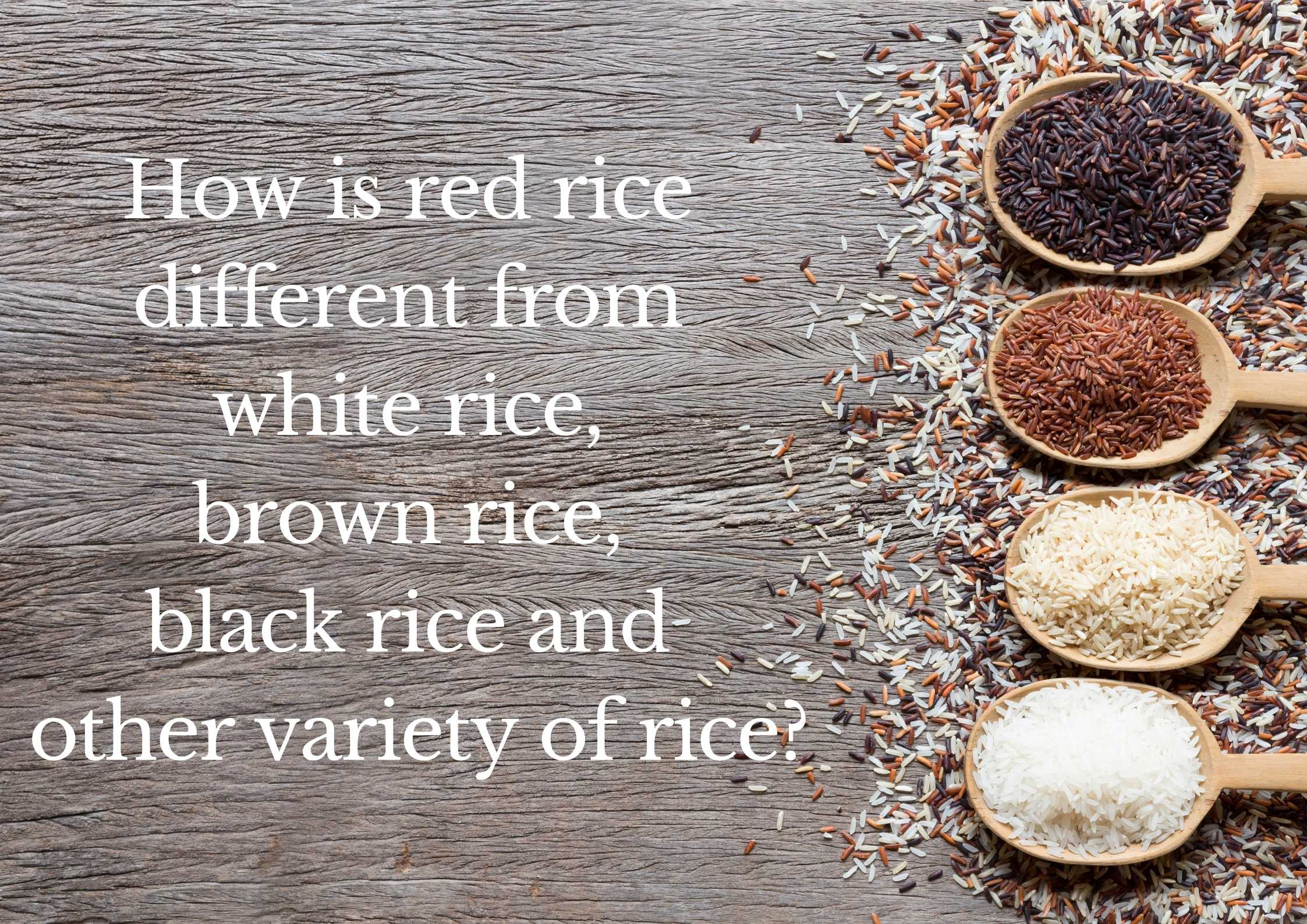
How is red rice different from white rice, brown rice, black rice and other variety of rice?
Red rice is a type of whole-grain rice that retains its red husk. This gives the rice a reddish colour that can range from light pink to deep purple and this gives the grain a chewy texture and nutty flavour.
Red Rice compared to White Rice:
White rice, on the other hand, has had its husk removed. This makes the grain softer and less nutritionally dense than other types of rice.
Red Rice compared to Brown Rice:
Brown rice is another type of whole grain rice. Like red rice, it retains its brown husk when harvested. This gives the rice its characteristic brown colour. It has a slightly chewy texture and nutty flavour, similar to red rice.
Red Rice compared to Black Rice:
Black rice is a type of whole-grain rice that gets its black colour from anthocyanin pigments. These pigments are also found in blueberries and blackberries. These pigments are also responsible for the deep purple or blue colour of black rice. Black rice has a slightly sweet flavour and chewy texture.
While all of these types of rice are healthy choices, red rice is the most nutrient-dense. It's packed with antioxidants, fiber, and minerals like magnesium and iron.
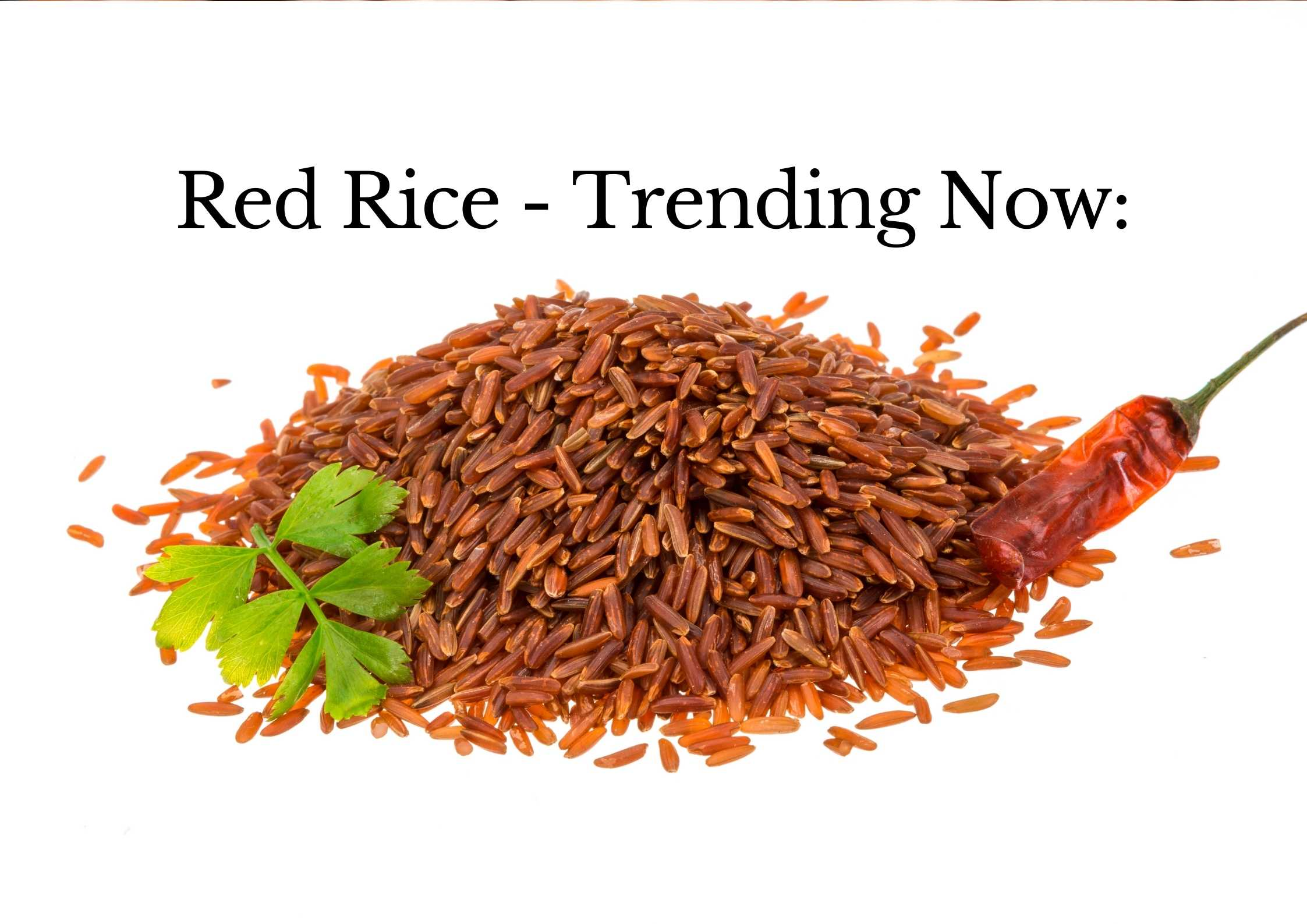
Red Rice - Trending Now:
Red rice is trending now because of its impressive nutritional profile and health benefits. This grain is packed with antioxidants, fiber, and minerals like magnesium and iron.
Red rice is a healthy choice for anyone looking to improve their diet. This grain can be used in place of white or brown rice in any recipe. It's perfect for stir-fries, risottos, pilafs, salads, and side dishes. Give it a try today!
- Choosing a selection results in a full page refresh.
- Press the space key then arrow keys to make a selection.
- Use left/right arrows to navigate the slideshow or swipe left/right if using a mobile device





